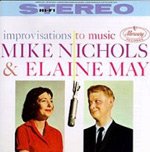Every culture, subculture, genre, and category has its wonks. Improvisational comedy is no exception; its biggest snobs scoff at Robin Williams’ zany talk show antics, and they eschew the hackery of television shows like Whose Line Is It Anyway? by decrying the lack of characters and scenework. I am one of those snobs.
I know, I know: there are other, more important things worth defending, such as root canals and the oeuvre of Milli Vanilli. When done poorly, improv is an interminable, execrable experience. However, when improv is done well, it is downright transcendental. Scenes, characters, objects, motivations appear out of nowhere. Long-form improv is less about laughs than it is about creating worlds out of nothing; the laughs come naturally when appropriate (or inappropriate) objects, people, and settings suddenly appear with clear, natural motivations. Simply put: long-form improv is about story and characters, while short-form improv is about games and zingers. Not that I’m biased.
End snob rant, enter Nichols & May, two of the most capable and brilliant long-form improvisers in history. Their second record, An Evening With Mike Nichols And Elaine May, is considered their best, but you can read about that elsewhere (and do, because it’s flat-out amazing). Their debut, Improvisations To Music, is a different matter, because it’s a snapshot of two stage actors trying out their craft in the studio for the first time, with mixed results.
Mike Nichols and Elaine May honed their abilities with the Compass Players, a Chicago theater group that later became Second City. They brought their improv act to clubs and eventually became a Broadway sensation (a period partially documented on An Evening With…). Improvisations To Music finds them between these milestones.
What works best on the album are the variations on genre: the Hitchcockian spies of “Mysterioso” who speak in increasingly ridiculous code (“Go to the Good Humor man... order a Fudgicle”), the dentist and patient stuck in a Douglas Sirk melodrama (“If I can teach one Saudi Arabian the rules of dental hygiene as I have learned them…”). Each highlight, especially the dentist scene, are exercises in pace, and they build to climaxes with subtle endings. Credit is also due to pianist Marty Rubenstein, who provides perfect, unobtrusive accompaniment.
What doesn’t work just feels arbitrary, such as the jaunty “Everybody’s Doing It,” a questionable parody of beat poetry using corporate and ad speak. It is either unfunny or simply too dated to work. Other skippable tracks are simply dull, such as the conversational “Tango” and the father-daughter scene “Chopin,” which gets points for sad drama but not much else.
Improvisations To Music is interesting for everything it is not: namely, a fitting start to huge careers. Mike Nichols especially flowered shortly after the duo broke up in the mid-’60s, going on to direct countless Broadway hits, as well as films such as Who’s Afraid Of Virginia Woolf? and The Graduate. Elaine May became a successful screenwriter and playwright (and teamed again with Nichols on The Birdcage and Primary Colors, which both featured May’s screenplay and Nichols’ direction). For the duo’s masterpieces, and to see what happens when ridiculous situations build naturally to absurdity, check out An Evening With Mike Nichols & Elaine May. For the moment before it all exploded, start here.
1. Cocktail Piano
2. Mysterioso
3. Second Piano Concerto (The Dentist)
4. Everybody’s Doing It
5. Bach To Bach
6. Tango
7. Sonata For Piano And Celeste
8. Chopin
